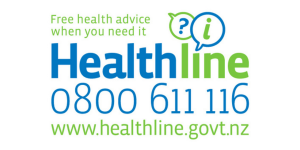Wishing everyone a safe and happy Christmas and New Year – Meri Kirihimete from the Healthify team.
Urea cream
Key points about urea cream
- Urea cream is used to treat dry skin conditions such as eczema and psoriasis.
- It's used as an emollient (moisturiser).
- Urea cream is also known as Urea (HealthE) Cream®, AquaCare HP®, Topiderm Urea Cream® or Eulactol®.
- Find out how to use it and possible side effects.

Urea cream is a non-greasy emollient or moisturiser, used to treat dry skin conditions such as eczema and psoriasis. It may also be useful to treat dry skin in older adults.
When applied to the skin, urea causes the skin to retain moisture, which helps to reduce dryness. The urea is mixed in with a moisturising base that provides a layer of oil on the surface of the skin. This helps prevent water from evaporating from the skin surface. Both actions soothe and soften the skin.
Read more about emollients and moisturisers.
In Aotearoa New Zealand, urea cream is available in different strengths to buy over the counter at a pharmacy.
- Urea 10% cream (Urea (HealthE) Cream®, AquaCare HP® and Topiderm Urea Cream®) is commonly used to moisturise moderately dry skin.
- Urea 25% cream (Eulactol®) is used for excessively dry skin or areas of thick skin such as the heels of the foot.
Urea cream is also available combined with lactic acid 5% (Calmurid®).
- Wash your hands before applying urea cream.
- Apply generous amounts of urea cream on the skin several (at least 2 to 3) times a day or as required. If it's been prescribed by your healthcare provider, follow the directions on the label.
- It's best to apply urea cream immediately after washing, bathing or showering, while the skin is still damp.
- Apply urea cream in a downward motion, in the direction of hair growth and gently massage into your skin. Avoid rubbing.
- Don't put your hands into the pot, tub or jar of cream when removing for use. This will contaminate the cream. Instead, use a clean spoon or spatula to scoop out the required amount of cream and place onto a clean plate or paper towel. Some people put the cream in a clean pump bottle to reduce contamination.
- Don't apply urea cream on weeping or broken (cracked or bleeding) skin or on any area that is infected or oozing.
Some products that contain urea cream also contain paraffin which, if used in large amounts, can soak into clothing and make them catch fire more easily. Read more about the fire hazard from emollients containing paraffin.
Like all medicines urea cream can cause side effects, although not everyone gets them. If you're concerned about any symptoms you think might be related to your medicine, talk to your healthcare provider.
Tell your healthcare provider if these side effects bother you.
- Signs of sensitivity or an allergic reaction, such as red, stinging, itchy skin or a rash. This may be confused with a flare-up of eczema or dermatitis.
Read more about medicines and side effects and reporting a reaction you think might be a side effect.
The following link provides further information on urea cream:
Urea(external link) Dermnet NZ
Brochures
Fire hazard from skin products containing paraffin(external link) Medsafe, NZ, 2019
Identifying emollients, barriers, and creams(external link) Health NZ | Te Whatu Ora, NZ, 2025
Medicines and side effects(external link) Healthify He Puna Waiora, NZ, 2024
5 questions to ask about your medications (external link)Health Quality and Safety Commission, NZ, 2019 English(external link), te reo Māori(external link)
References
- Emollient and barrier preparations(external link) New Zealand Formulary
Brochures

Fire hazard from skin products containing paraffin
Medsafe, NZ, 2019

Identifying emollients, barriers, and creams
Health NZ | Te Whatu Ora, NZ, 2025

Health Quality and Safety Commission, NZ, 2019 English, te reo Māori
Credits: Healthify editorial team. Healthify is brought to you by Health Navigator Charitable Trust.
Reviewed by: Stephanie Yee, Pharmacist, Auckland.
Last reviewed:





